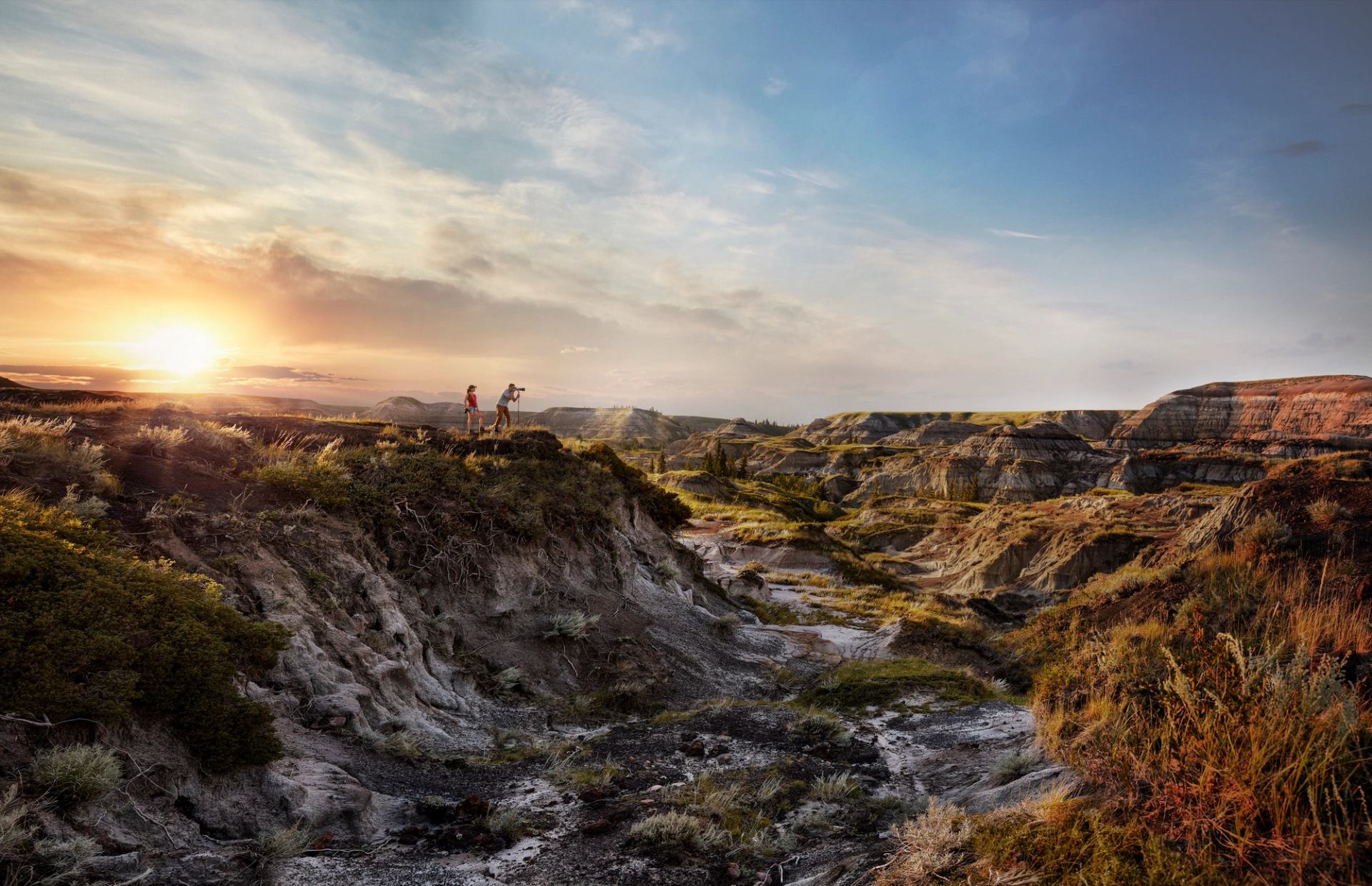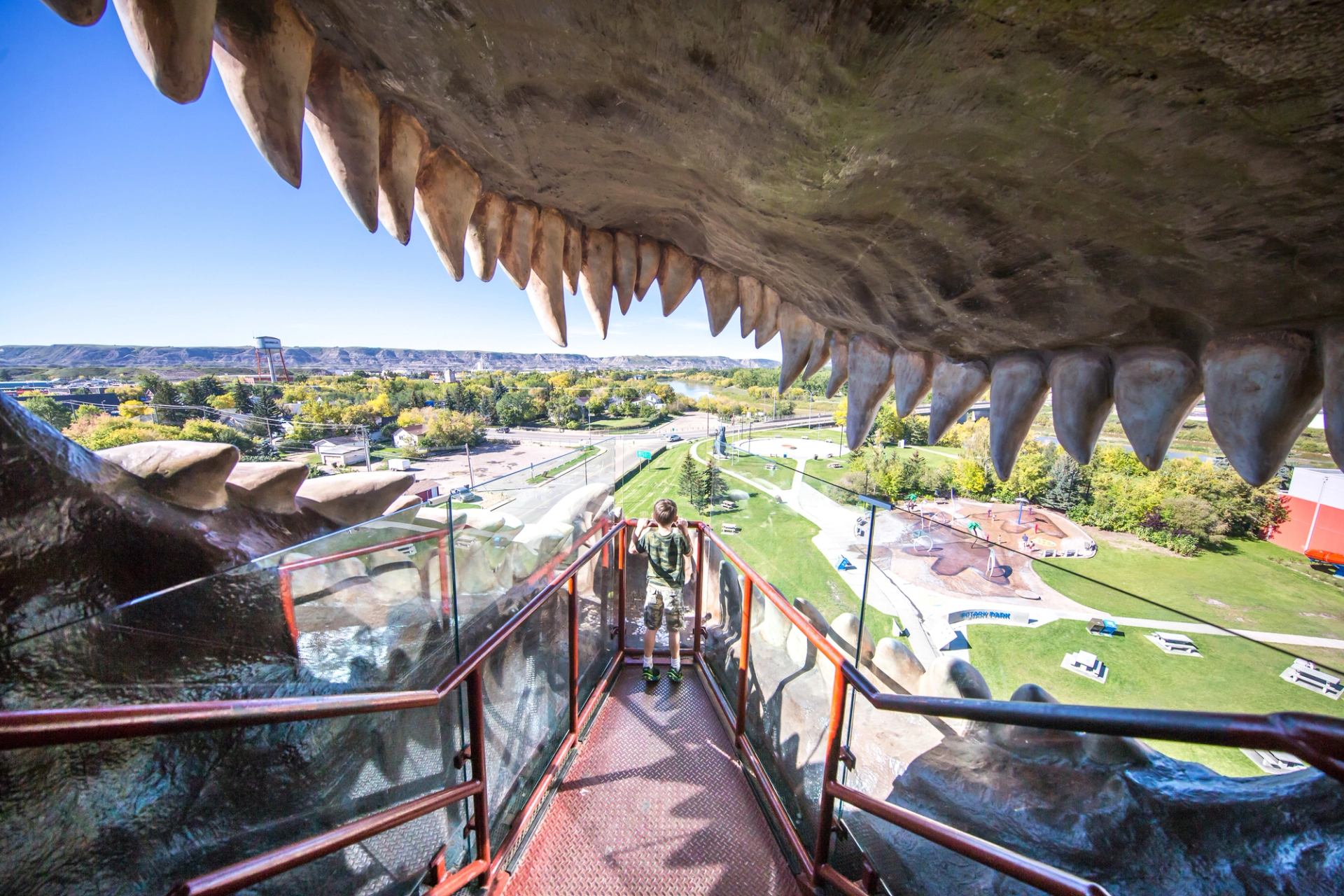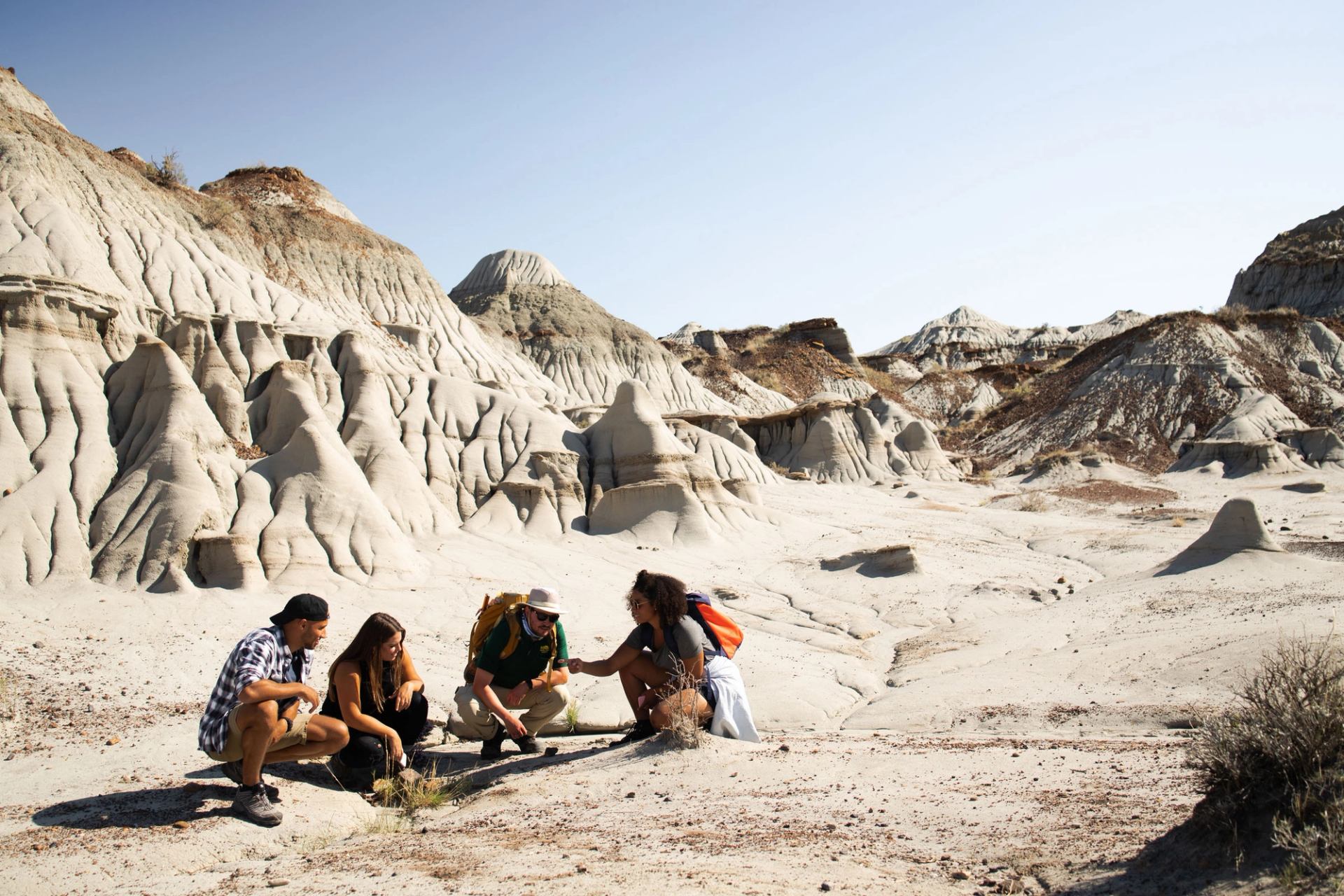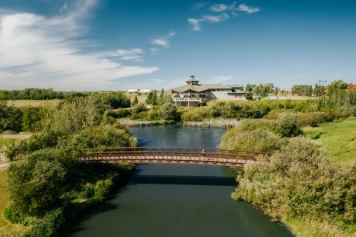Travel back millions of years in dinosaur country
Imagine you found a dinosaur bone or preserved prehistoric footprint. You'd probably feel like you'd found a portal to another world. Excited? Perhaps “pinch me” would be more accurate.
Paleontologists in Alberta have been finding prehistoric treasures for decades – and so have ordinary folks while out on a stroll. Alberta is one of the world's hotbeds for remnants of creatures that roamed the Earth a mind-boggling 70 million years ago, give or take a few millennia.
While you can't take home prehistoric relics, you can take a self-guided walk in the footsteps of all kinds of ancient creatures. Or spend a few hours (or a day) with a paleontologist in one of the province's abundant dino bone beds. Here are three time-travelling road trips from Calgary and Edmonton to take this summer.
Trip 1: One to three days
Alberta's Badlands: 135 kms (83.8 mi) northeast of Calgary
Tip: Summers in the Badlands can be either hot and sunny or rainy and chilly, so dress in layers and bring a hat, sunscreen and plenty of water.
Dinosaur Trail Loop: Head north from Calgary on Highway 2 and then east on Highway 9. You'll breeze by a patchwork of gold canola fields and endless blue sky above. You're headed towards the Badlands, the name alone sounds mysterious and intriguing. 120 km (75 mi) in, you'll feel you've entered another world. Around every bend are hills wrinkled by rain, wind and snow.
Closer to Drumheller: Descend into Dinosaur Valley, and you'll be in Drumheller, the “Dinosaur Capital of the World.” Gaze out at the landscape, and you can easily imagine this was the sub-tropical backyard of the horned triceratops and T-Rex.
Horseshoe Canyon: On Highway 9 near Drumheller, pull over and peer into a stunning moonscape of desert hills and gullies where flying and land-loving beasts once chomped down on lush foliage. The landscape alone is inspiration enough to explore one of the trails.







